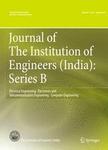版权所有:内蒙古大学图书馆 技术提供:维普资讯• 智图
内蒙古自治区呼和浩特市赛罕区大学西街235号 邮编: 010021

作者机构:Department of Computer Science and Engineering Noorul Islam Centre for Higher Education Kumaracoil India Department of Computer Science and Engineering RMK College of Engineering and Technology Puduvoyal Gummidipoondi India
出 版 物:《Journal of The Institution of Engineers (India): Series B》 (J. Inst. Eng. Ser. B)
年 卷 期:2022年第103卷第6期
页 面:1909-1916页
核心收录:
学科分类:12[管理学] 08[工学] 0831[工学-生物医学工程(可授工学、理学、医学学位)] 0710[理学-生物学] 1007[医学-药学(可授医学、理学学位)] 0810[工学-信息与通信工程] 1205[管理学-图书情报与档案管理] 100706[医学-药理学] 1201[管理学-管理科学与工程(可授管理学、工学学位)] 1002[医学-临床医学] 1001[医学-基础医学(可授医学、理学学位)] 0837[工学-安全科学与工程] 0835[工学-软件工程] 0836[工学-生物工程] 0812[工学-计算机科学与技术(可授工学、理学学位)]
摘 要:Retinal eye diseases lead to vision loss and visual deficiency. Various kinds of human eye diseases are arteriosclerosis, diabetic retinopathy, hypertension, and glaucoma. Diabetic retinopathy is the form of the injured retina which is occurred by diabetes. The improper treatment without proper observations leads to permanent blindness. Therefore, it is necessary to detect the disease at an earlier stage to protect their vision. The main aim of this research is to detect diabetic retinopathy early from the fundus images. The proposed approach detects diabetic retinopathy through four major stages, namely pre-processing, segmentation, feature extraction, and classification. The proposed classifier uses the deep neural network for classifying the diabetic retinopathy (DR) infected images and normal images. Here, the proposed approach utilizes features such as coherence, edge features, shape features, local binary pattern, and Gray Level Co-occurrence Matrix (GLCM) features from the segmented output. The performance measures like sensitivity, specificity, accuracy, precision, F1-measure and processing time are utilized for the estimation of the proposed classifier and compared to other approaches. From the performance evaluation, it is noted that the proposed diabetic retinopathy detection has obtained an accuracy of 99.42%, a sensitivity of 98.84%, and a specificity of 96.49% that outperforming other state-of-art methods. © 2022, The Institution of Engineers (India).